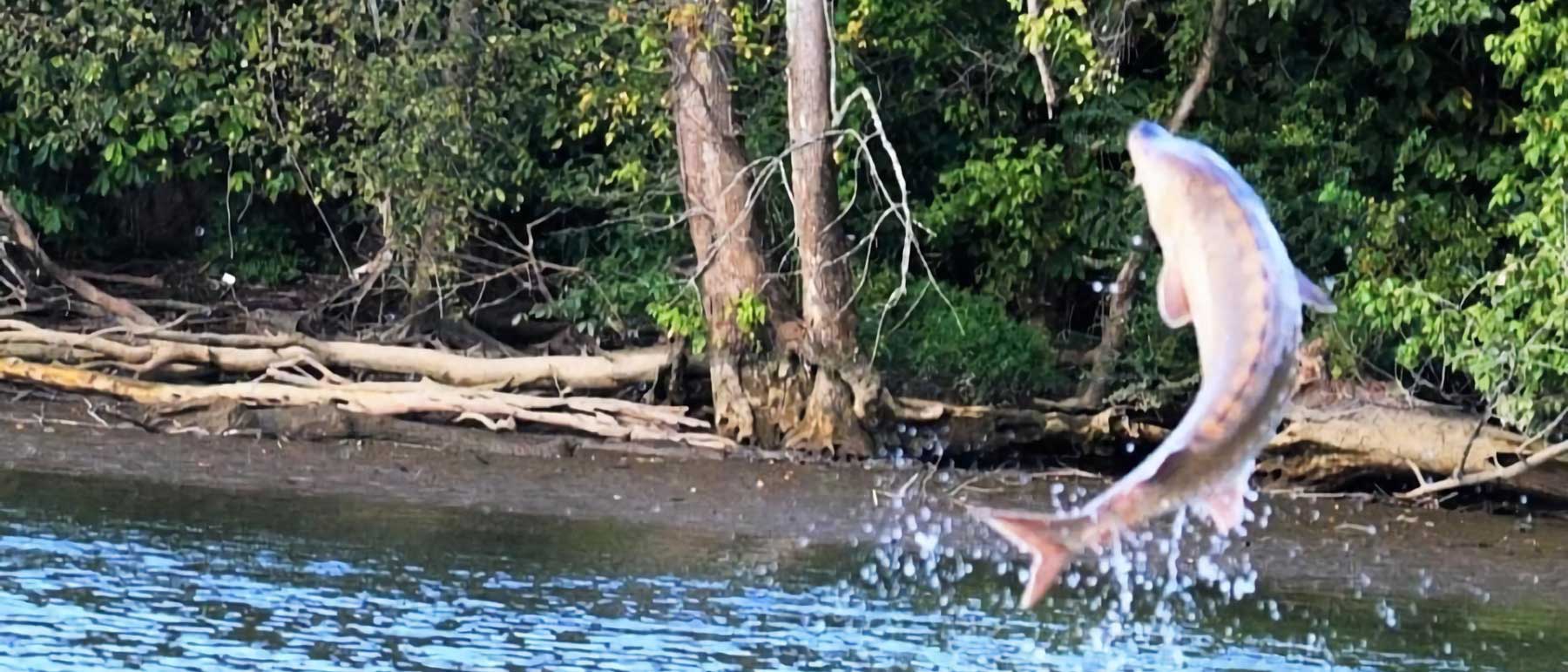
Atlantic Sturgeon Overview
Biologists with VCU's Rice Rivers Center have been studying the Atlantic Sturgeon since 2007 and the information developed will aid in the recovery of this iconic James River species.
Sturgeon Facts
- Like salmon on the Pacific coast, Atlantic sturgeon roam the open oceans as adults and return to their birth-river to spawn and access a safe nursery environment for their young.
- Sturgeon require well-oxygenated water and a clean, hard river bottom to thrive; as such, they are idea “indicator species” to gauge the success of restoration efforts for the river and Chesapeake Bay.
- Sturgeon are covered by hard, bony plates called scutes that, together with their larger size, give the fish a prehistoric appearance. Sturgeon have been around a long time, but not quite so long as the dinosaurs.
Atlantic Sturgeon in the James River
Atlantic sturgeon are the largest and longest-lived residents of the James River, historically growing to 14 feet and living to perhaps 60 years. Sturgeon were culturally important to local Native American groups and saved the struggling Jamestown colony during the "starving time" of 1610. Throughout the 19th century, James River sturgeon supported a major commercial fishery for eggs (caviar) and flesh, which were considered delicacies in cities like New York and Boston.
Centuries of overfishing, habitat alteration and pollution have eradicated this “founding fish” from many Chesapeake Bay tributaries. In Virginia, small but viable populations of Atlantic sturgeon persist in several rivers, including the James, and the species is now listed as federally endangered through most of its historic range. As a consequence of the species’ long decline and current rarity, biologists understand very little about sturgeon behavior, ecology or life history.

A sturgeon breaches from the James River. (Photo: Dawn Virginia Shilling)